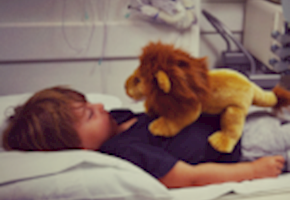Lauren Conway, M.A. & Brian Yankouski, M.A., BCBA
Behavioral and Educational Solutions and Training of NJ, LLC (BEST NJ, LLC)
Fall is officially underway which means it’s time to prepare for cooler temperatures, shorter days, and of course Halloween! While Halloween is a time for kids to dress up as their favorite character and go from house to house collecting sweet treats, this can be a challenging experience for a child with special needs. Below are suggestions to make trick or treating a less stressful and more enjoyable experience for both you and your child.
- Involve your child in selecting their costume (i.e., choose a highly preferred cartoon character you know your child adores).
- Have your child try on their costume at least one time before Halloween. This helps ensure they are comfortable wearing the material. Cut out any tags that may bother your child.
- If your child has difficulty wearing the costume and engages in behaviors such as taking off the costume, then you may have to provide them with a reward for wearing the costume for a certain period of time. For example, if your child can only wear the costume without behaviors for one minute then reward them for it and then gradually increase the amount of time that they will wear it (i.e., 1-minute to 3-minutes to 5-minutes, etc.). This may take time to get them accustomed to wearing the costume so plan to do this procedure for a few weeks before the big day of Halloween.
- Role-play trick or treating. Have your child practice ringing the doorbell, saying ‘trick-or-treat’, and ‘thank you’ after selecting a treat.
- If your child is nonverbal, do not stress about spoken language. Encourage the use of sign language or a picture card to allow your child to communicate with someone at each house as they go trick-or-treating.
- Take them to a neighborhood they are familiar with. This will help ease their stress so they are not being exposed to a new environment, which might elicit problem behaviors due to a deviation in routine.
- Utilize a wagon to minimize walking. This is useful for younger children who may not have the physical stamina to walk for extended periods of time.
- Watch for behaviors indicating that your child is getting tired or no longer interested in trick-or- treating.
- Praise your child for appropriate behavior by providing high-energy verbal praise or access to a highly preferred item, food, or other reinforcer.
- Be patient when your child is choosing a piece of candy; it may be difficult for him or her to grab a single piece of candy if they have limited fine motor skills or experience motor planning difficulties causing them to take a longer time to make a choice.
- If your child has food allergies, bring highly preferred items (e.g., food or toys) that can substituted for the candy they chose.
As always at Behavioral and Educational Solutions and Training of NJ, LLC (BEST NJ, LLC) we are here to help families in teaching their children functional life skills and reducing problem behaviors. If we can be of assistance to any families please do not hesitate to contact us. Please check out our website at www.bestnjllc.com for more details about our services and contact information.






Add A Comment
Thank you for your comment.
Sorry! There was a problem with your comment submission. Please try again.
Comment
Allowed HTML: <b>, <i>, <u>, <a>
Comments
Thank you for your comment.
Sorry! There was a problem with your comment submission. Please try again.
Thank you for your comment.
Sorry! There was a problem with your comment submission. Please try again.